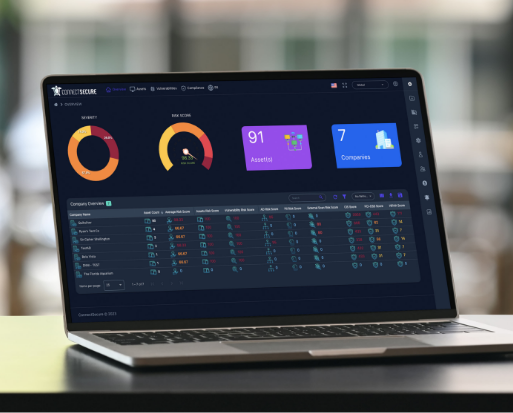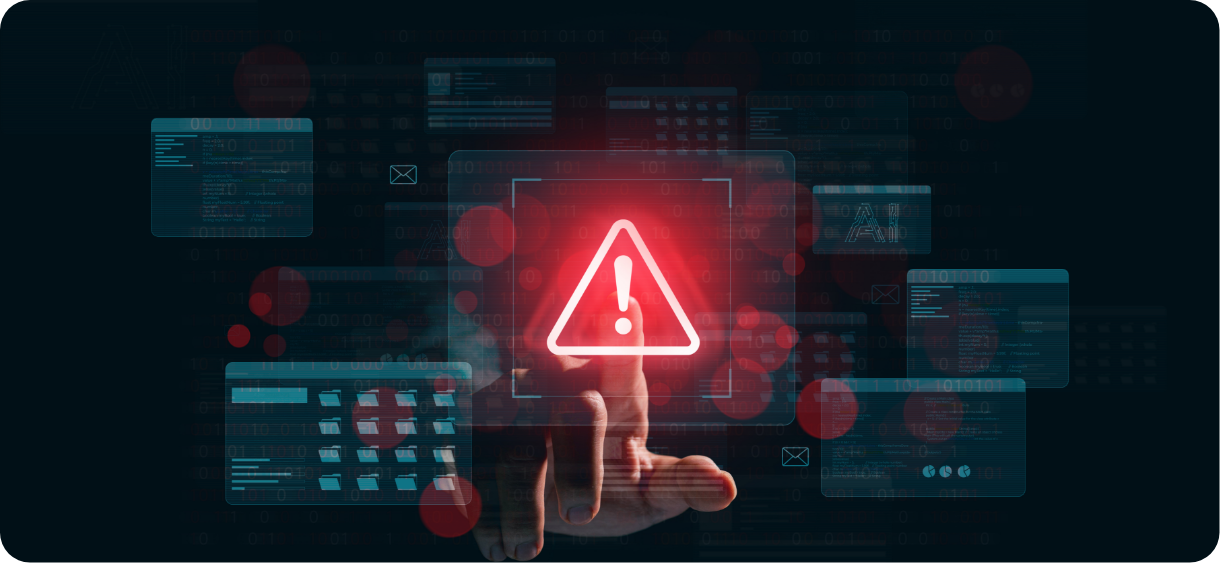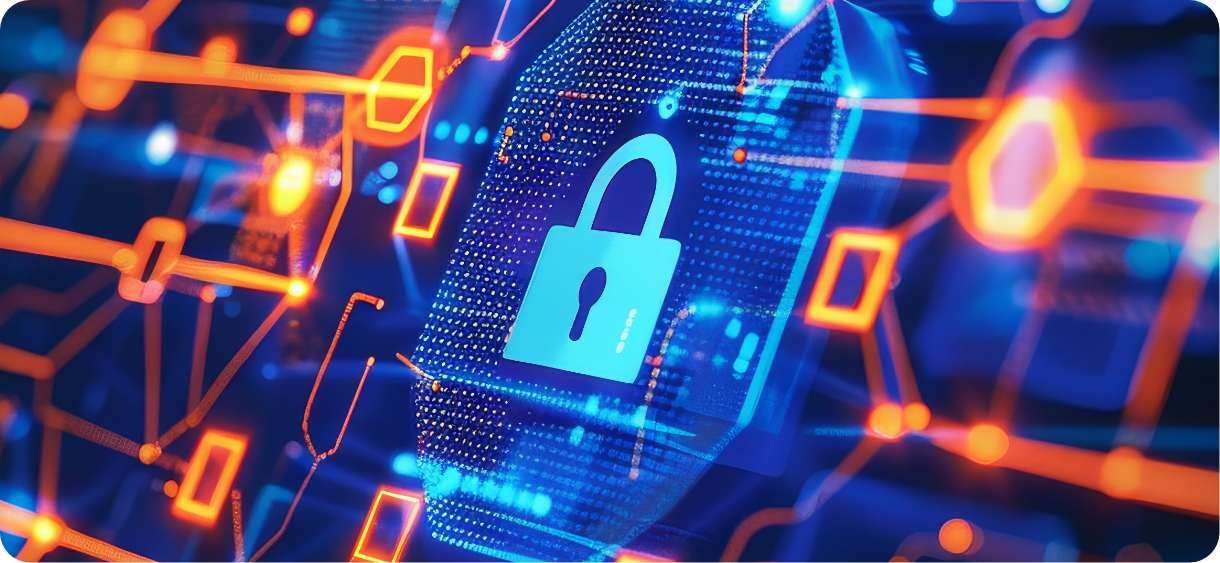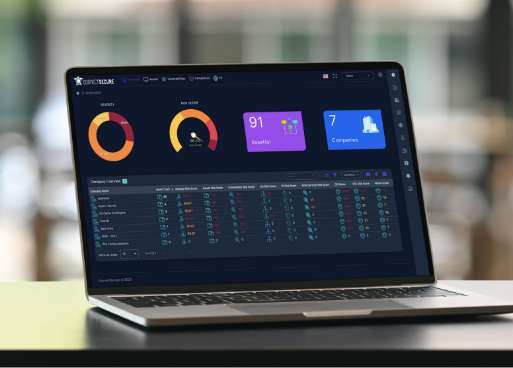The MSP Vulnerability Management Playbook
The MSP Vulnerability Management Playbook
Introduction
Definition of Vulnerability Management
Importance of Vulnerability Management

Experience the Power of ConnectSecure
Overview of the ConnectSecure Vulnerability Management Platform

Types of Vulnerabilities
Common Vulnerabilities and Exposures (CVEs)
Zero-Day Vulnerabilities
Insider Threats
Third-Party Vulnerabilities

Vulnerability Scanning
Explanation of Vulnerability Scanning
Benefits of Regular Scanning

Boost Client Security
Automation in Vulnerability Scanning
-
Speed and Efficiency
Automated vulnerability scanning tools can perform scans much faster than manual processes. This allows organizations to identify vulnerabilities in real-time and take immediate action to remediate them. The speed and efficiency of automated tools are particularly valuable in large organizations with complex IT environments. -
Consistency and Accuracy
Manual vulnerability management processes are prone to human error, which can result in missed vulnerabilities or inaccurate assessments. Automated tools ensure consistency and accuracy in scanning and reporting, providing organizations with a reliable assessment of their security posture. -
Integration with Existing Security Tools
Automated vulnerability management tools can easily integrate with other security tools, such as Security Information and Event Management (SIEM) systems, to provide a comprehensive view of an organization's security posture. This integration enables organizations to correlate vulnerability data with other security events, improving their ability to detect and respond to threats.
ConnectSecure's Vulnerability Scanning Features

Vulnerability Assessment
Understanding Vulnerability Assessment
Difference Between Scanning and Assessment
How ConnectSecure Conducts Vulnerability Assessments

Vulnerability Remediation
Definition of Remediation
Importance of Timely Remediation

See ConnectSecure in Action
Automated Vulnerability Remediation
-
Reducing Response Times
Automated remediation tools can significantly reduce the time it takes to address vulnerabilities. By automatically applying patches and reconfiguring systems, these tools help organizations minimize the window of exposure and reduce the risk of a successful attack. -
Scalability
As organizations grow, managing vulnerabilities across multiple systems and locations becomes increasingly complex. Automated remediation tools can scale to meet the needs of large organizations, ensuring that vulnerabilities are addressed quickly and consistently across all systems. -
Resource Optimization
Automation allows IT teams to focus on more strategic tasks by handling routine vulnerability management processes. This optimization of resources can lead to improved overall security and increased efficiency within the organization.
ConnectSecure's Remediation Solutions

Vulnerability Management Best Practices
Asset Management
Vulnerability Scanning
Risk Assessment and Vulnerability Prioritization
-
Risk-Based Prioritization
ConnectSecure uses risk-based prioritization to assess the severity of vulnerabilities. This approach ensures that MSPs address the most significant risks first, minimizing the potential for damage. -
EPSS Scoring
The platform incorporates the Exploit Prediction Scoring System (EPSS) to predict the likelihood of a vulnerability being exploited in the near future. By focusing on vulnerabilities with higher EPSS scores, MSPs can proactively address the most imminent threats. -
Client-Specific Risk Profile
ConnectSecure allows MSPs to create client-specific risk profiles, enabling a more tailored approach to vulnerability management. By understanding the unique risk landscape of each client, MSPs can provide more effective, targeted remediation strategies.
Patch Management
-
Automated Patch Deployment
With ConnectSecure, patch management becomes an automated process, allowing MSPs to deploy patches across multiple systems and clients without manual intervention. This not only saves time but also ensures that patches are applied consistently, reducing the risk of human error. -
Third-Party Patching
In addition to OS-level patches, ConnectSecure also supports third-party patching for over 600 applications, including Adobe, Java, and others. Third-party applications are often targeted by attackers, making it essential to keep them up-to-date. -
Scheduling and Reporting
ConnectSecure allows you to schedule patches during non-business hours to minimize disruption to client operations. The platform’s detailed reporting features also enable you to provide clients with evidence of completed patching, reinforcing the value of your services.

Elevate Your MSP Services
Configuration Management
Continuous Monitoring
-
Real-Time Alerts
ConnectSecure provides real-time alerts for newly discovered vulnerabilities, allowing MSPs to take immediate action. These alerts can be customized based on the severity of the vulnerability, ensuring that critical issues are prioritized. -
Automated Response Action
The platform supports automated response actions, such as disabling compromised accounts or isolating affected systems, to contain threats before they can cause significant damage. -
Historical Data and Trend Analysis
ConnectSecure’s continuous monitoring capabilities include historical data and trend analysis, enabling MSPs to track the effectiveness of their vulnerability management strategies over time. This data can be used to refine processes and improve overall security posture.
Reporting and Metrics
Remediation Planning
Communication and Collaboration
Employee Training and Awareness

ConnectSecure's Role in Effective Vulnerability Management
How ConnectSecure Simplifies Vulnerability Management
-
Automated Vulnerability Scanning and Remediation
ConnectSecure automates both vulnerability scanning and remediation processes. This reduces the manual workload on your IT team and ensures that vulnerabilities are identified and addressed in a timely manner. The automated nature of these tasks means that your organization can maintain a continuous security posture without the need for constant human intervention. -
Intuitive Dashboards and Reporting
The platform provides easy-to-read dashboards and comprehensive reporting features that give a clear overview of your security status. These tools help MSPs communicate with clients about their cybersecurity posture, making it easier to demonstrate the value of your services. Clients appreciate transparency and regular updates, and ConnectSecure makes it simple to provide these through automated reports that are easy to understand. -
Multi-Tenancy for MSPs
Designed with MSPs in mind, ConnectSecure’s multi-tenant capability allows you to manage all your clients from one platform, making it easier to scale your services. This feature is especially beneficial for MSPs managing multiple clients across various industries, as it provides a centralized view of all client environments, enabling quicker response times and better resource management. -
Integration with Existing Tools
ConnectSecure integrates seamlessly with your existing security tools, enhancing your overall cybersecurity ecosystem. Whether you're using SIEM, endpoint protection, or other security solutions, ConnectSecure complements these tools by adding robust vulnerability management capabilities. -
Flexible Subscription Options
ConnectSecure offers scalable, pay-as-you go pricing models that cater to businesses of all sizes. Whether you’re a small MSP just starting or a large firm managing multiple enterprise clients, ConnectSecure’s flexible pricing ensures that you only pay for what you need.

Leverage Vulnerability Management
Key Takeaways
Throughout this guide, we've explored the key components of an effective vulnerability management strategy, emphasizing the importance of a proactive approach. From conducting comprehensive asset management to implementing continuous monitoring and prompt remediation, each step is integral in reducing your clients' attack surface and ensuring long-term security.
The importance of timely patch management and the value of automation were highlighted, showcasing how consistent vigilance can prevent vulnerabilities from turning into major security incidents. By integrating these practices, your MSP business not only mitigates risks but also strengthens client trust and enhances service delivery.

Ready to Drive Business With Vulnerability Management?
The Essential Role of Vulnerability Management
Vulnerability management is an indispensable part of any cybersecurity strategy. By staying ahead of potential threats through continuous monitoring, regular assessments, and prompt remediation, you’re safeguarding your clients against data breaches, financial loss, and reputational damage.
The ability to identify and address vulnerabilities before they can be exploited positions your MSP as a trusted advisor and essential partner in your clients' success. With the increasing complexity of cyber threats, the role of vulnerability management has become central to maintaining not only security but also operational integrity and client confidence.
Empower Your Clients with ConnectSecure
As an MSP, your clients rely on you to protect their digital environments and ensure they meet compliance standards. ConnectSecure is designed to help you do just that—providing a powerful, multi-tenant platform that simplifies vulnerability management across all client accounts.
By leveraging ConnectSecure, you can efficiently manage vulnerabilities, automate remediation processes, and deliver comprehensive compliance reporting that meets the rigorous demands of today's cybersecurity landscape.
Start a 14-Day Free Trial or schedule a One-on-One Demo to see how ConnectSecure can empower your MSP to offer unparalleled, proactive security services, build stronger client relationships, and drive business growth.
Additional Resources
Links to Relevant Blog Posts
Case Studies & White Papers on Vulnerability Management
- Solving Challenges with a Vulnerability Management Platform: Five Success Stories
- MSP Business Strategy: The value of hardening client attack surfaces
- ConnectSecure: How to win business with cybersecurity assessments